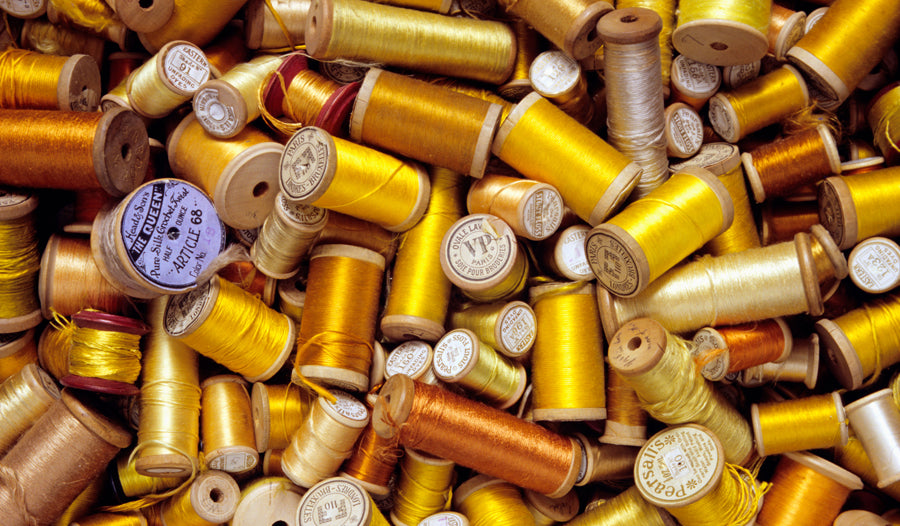
Yellow: A difficult colour

‘Illuminating’ is one of Pantone’s two 2021 colours of the year, described as ‘a bright and cheerful yellow sparkling with vivacity, a warming yellow shade imbued with solar power’. Pantone is an American printing company which in 1963 created a colour matching system to allow designers in different locations to reproduce identical colours. Its annual ‘colour of the year’ influences product design across fashion, interiors, packaging and graphics. Unusually, there are two colours of the year for 2021, the other being ‘Ultimate Gray’. Together, ‘Illuminating’ and ‘Ultimate Gray’ express ‘a message of positivity supported by fortitude’. For artist Brendan Jamison, who wraps solid wood and metal objects in wool to give them a soft, almost weightless quality, yellow is ‘definitely the most optimistic colour’. Reflecting rather than absorbing light it ‘creates a mystical glow around the object’.

Yellow has been used to colour textiles since prehistory, the earliest yellow dye being the mineral pigment yellow ochre. Subsequently a great variety of plants were found to produce yellow dyes in many shades. In ancient Persia, India and China, yellow was obtained from the stigma of the saffron crocus. It was very expensive due to its scarcity and labour-intensive harvesting – 100kg of flowers produces just 1.25 kg of colourant. Saffron was later introduced to Europe but here yellow dyes were more commonly obtained from weld, which dye historian Susan Kay-Williams calls ‘the quintessential European yellow dye’. It was said to ‘give the most beautiful colour on wool and silk’, but was also used to dye linen and cotton. Other European yellow-giving plants include dyers’ broom, chamomile and yellowwood, the latter producing a pale yellow when used alone, but also red, white and olive green when combined with, respectively, alum, potash and sulphur. In different parts of Asia, yellow dyes were obtained from the roots, seeds, bark, rind or wood of a multitude of plants including tamarind, pomegranates, turmeric, jackfruit, safflower, breadfruit and mango.
In conventional colour theory, yellow is one of the three primary colours, the others being blue and red. Primary colours cannot be created by any combination of other colours and are mixed to produce all other tints. Yellow dyes were therefore also needed to make other dyes, especially green which could not be produced from a single dye bath. Most commonly in Europe, a strong green dye was obtained from using both woad and weld.

Despite the abundance of yellow plant dyes, identical shades could not be recreated with any certainty and many of the dyes were fugitive, meaning the colour of the dyed fabric changed over time or according to the environment in which it was used. This changed with the invention of synthetic aniline dyes, produced from coal tar, in the mid-nineteenth century. These not only offered much better colour stability and repeatability, but also greatly extended the range of colours available and dominated the market by the start of the twentieth century. But concerns about sustainability, especially in relation to water pollution and wastage, are leading to renewed interest in organic colourants in the form of bacterial dyes. However, while blues and reds have been successfully produced, to date, there is no yellow bacterial dye…
The above excerpt was taken from our latest issue, Issue 101 Grow. Find out how to read the rest of the article here.
